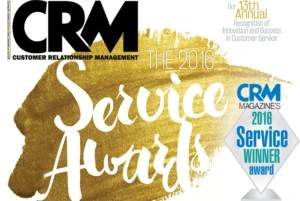
2016 Customer Service Trends: Empower Every Employee to Serve the Customer
“Most employees are trying to engage the empowered customer with the same siloed technologies and stagnant knowledge repositories they’ve used (or not used) for years. This is creating a customer service and customer experience divide that will further separate leaders from laggards in 2016.”
We’ve all heard the saying “customer service is the new marketing,” but with 89% of companies expected to compete mostly on the basis of customer experience in 2016 (compared to just 36% in 2010)*, it’s not just marketing where customer service makes an impact. For a consistently satisfying customer experience, customer service must be everyone’s job.
In Microsoft’s ten customer service trends to watch this year, general manager Bill Patterson makes the case that employee empowerment (especially around knowledge, insights and mobility) will create an even greater separation between the customer service and customer experience leaders and laggards in 2016.
Here’s Patterson’s guest post on this trend to watch, featured in CRM Magazine’s 2016 Mega Trends in CRM:
 “With customer service and customer experience beginning to overtake price and product as brand differentiators, big investments have been made over the past few years in empowering customers with more ways to engage, provide feedback and share their experiences. Yet most employees are trying to engage the empowered customer with the same siloed technologies and stagnant knowledge repositories they’ve used (or not used) for years. This is creating a customer service and customer experience divide that will further separate leaders from laggards in 2016.
“With customer service and customer experience beginning to overtake price and product as brand differentiators, big investments have been made over the past few years in empowering customers with more ways to engage, provide feedback and share their experiences. Yet most employees are trying to engage the empowered customer with the same siloed technologies and stagnant knowledge repositories they’ve used (or not used) for years. This is creating a customer service and customer experience divide that will further separate leaders from laggards in 2016.
Consider these statistics: 90% of consumers say they expect consistency and continuity from a brand across channels. Yet, according to Forrester Research, only 36% of contact centers have implemented multichannel integration to provide consistent experiences; 70% do not train agents to support multiple channels, and 56% do not offer an agent-facing knowledge management solution. In addition, a third of Gen Y workers say their at home technology is better than what they have at work.
Most customers now update their personal technology every one to two years. Isn’t it time we engage the empowered customer with equally empowered employees?
Organizations that will continue to struggle in customer service and customer experience cling to the perception of customer service as a single department and a cost center when nothing could be further from today’s truth. Customer service should be made the responsibility of every employee, positioned as a value center, and invested in as such by brands that not only wish to survive, but to lead in profits and perception. According to Microsoft’s Global State of Multichannel Customer Service Report, 97% of consumers say customer service is important in their choice of and loyalty to a brand, and 60% have higher customer service expectations than just one year ago.
Employee Empowerment: Where to Start
To improve employee empowerment for customer service and engagement moving forward, knowledge must become a foundational investment. The benefits of all employees being empowered with knowledge are many but include increased first contact resolution, increased customer satisfaction and consistent responses across departments and channels. Currently, according to IDC research, 44% of the time employees can’t find the answer or information they’re looking for, and 61% currently have to access four or more systems when looking, resulting in frustration and dissatisfaction all around.
Beyond Knowledge: Insights
Beyond the basic knowledge to serve, customer-facing employees must also be empowered with customer and performance insights. Leaders in 2016 will give customer-facing employees access to key customer insights to drive more personalized, proactive and predictive engagement.
This will include not only a detailed profile of the customer and the products and services they use, but tools such as sentiment analysis, real-time feedback and above-the-queue insights showing what the customer has done to date in seeking resolution so that the customer never has to repeat himself.
Going a step further, customer service agents will be empowered with a real-time view of their workload, service desk activity, their performance and will be able to leverage peer-to-peer collaboration technology to give and get help. Machine learning will add speed and intelligence to detect both patterns and trends, improving productivity, response times and next best actions.
Beyond Insights: Mobility
Leaders will empower employees with the same mobility and real-time engagement capabilities that customers use to connect. From service desk operation on a tablet, to field service updates on a wearable device, to searching, finding and sharing knowledge via their smartphone, mobility will transform the siloed contact center of the past into the organizational-wide customer engagement center of the future.
Gartner Research notes that in 2016, 89% of companies will compete mostly on the basis of customer experience. Many brands and organizations will talk the talk, but those that empower employees, and invest in customer service, will be able to walk the walk.”
—————————
Read 10 Customer Service Trends to Watch in 2016
We’ve asked 10 customer service thought leaders including Chief Customer Officer author and Customer Experience Professionals Association (CXPA) co-founder Jeanne Bliss and New York Times bestselling author and customer service keynote speaker Shep Hyken to give their thoughts on the top customer service trends brands and organizations should be following and acting on in 2016.
We’ve also asked what organizations can do immediately to improve customer service. What were their answers? Download this new eBook today to get expert suggestions on where your attention and budget should be focused in 2016:





